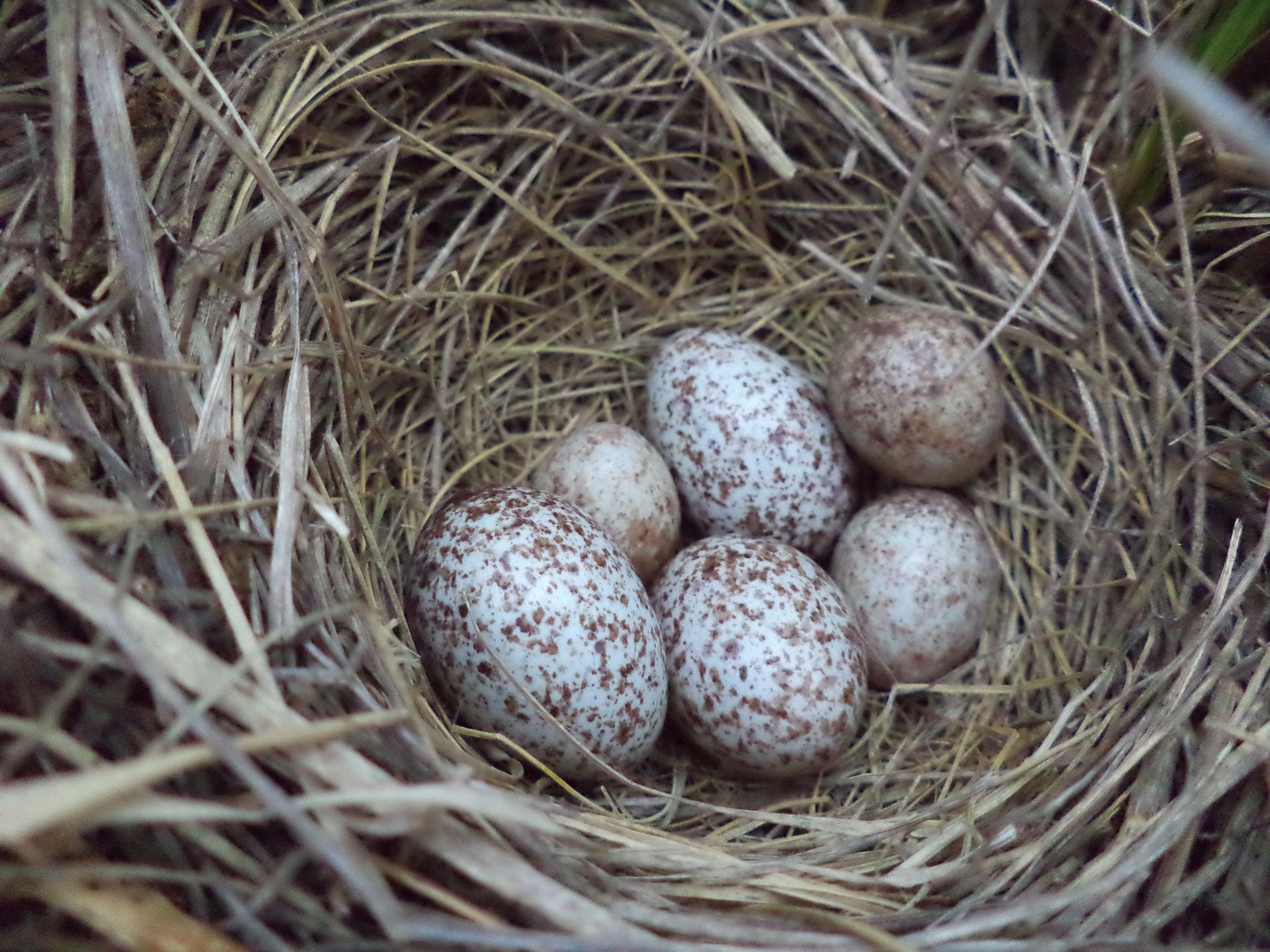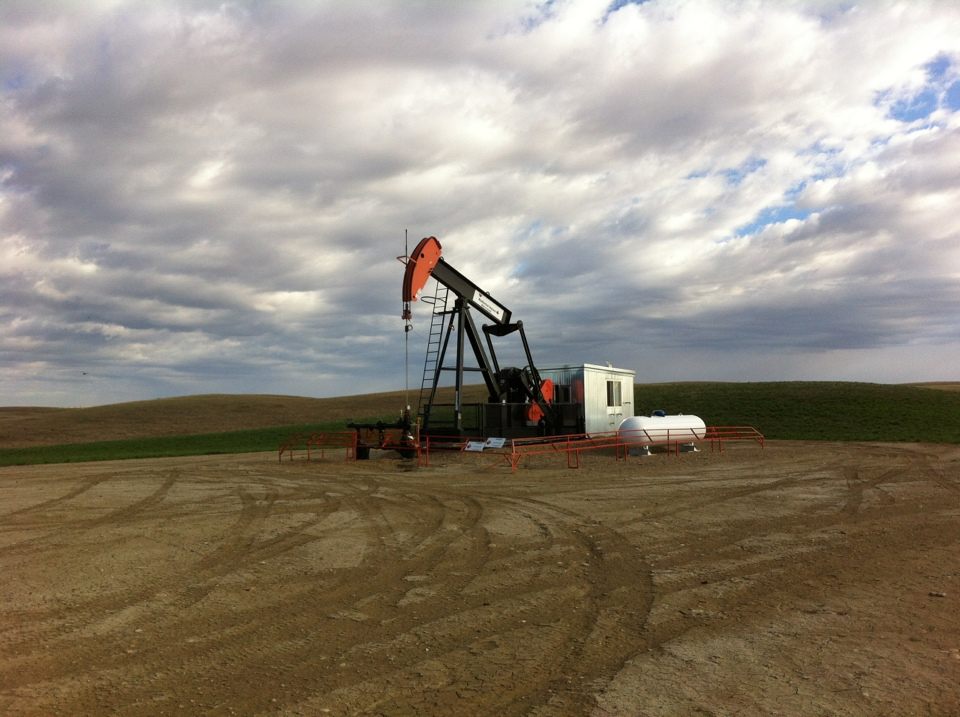Gas and Oil Pumps Are a Boon to Parasitic Cowbirds
And prairie songbirds are paying the price.

The Northern Great Plains of Canada are expansive grasslands, where shrubs and trees are few and very far between. But the flat landscape is increasingly interrupted by signs of human development—oil and natural gas pumps and roads crisscrossing the prairie. Roughly 135 square miles of grassland are impacted each year by the oil and gas industries, and all these disturbances fragment the prairie ecosystem. It’s along the edges of those fragments that ecologists are seeing changes in how species interact.
The brown-headed cowbird is a native of these grasslands. Jacy Bernath-Plaisted, a graduate student researcher at the University of Manitoba, is coauthor of a recent paper in the journal Royal Society Open Science that shows the edges of fragmented prairie in the Northern Great Plains is helping cowbirds populations. “They evolved on the Great Plains and it’s generally thought that they would travel with bison herds,” says Bernath-Plaisted. “However, they’ve expanded their range greatly since then, in large part thanks to human activity.” This may be good news for the cowbird, but it’s bad news for the songbirds that share the prairie—because cowbirds are what are called brood parasites.
“They don’t create their own nests, they don’t raise their own young,” says Bernath-Plaisted. “They find the nests of other species, they lay an egg in there, and then they just let the other species raise their young.” Some species in the cowbird’s native range have figured out how to spot cowbird eggs among their own and get rid of them (though in some cases cowbirds retaliate by destroying the host’s eggs, so-called “mafia” behavior), but species that didn’t evolve alongside the cowbird aren’t as adept as recognizing the trespasser’s eggs, and will raise the chicks as their own. In the past, cowbirds were highly mobile—they followed bison herds to eat the insects the large mammals stir up—so their impact in any one place or on any given species wasn’t severe. But that doesn’t appear to be the case anymore.


Songbird species such as the Savannah sparrow are common victims of cowbird parasitism, and these interloping eggs and chicks are a waste of valuable energy, drawing food and attention away from the sparrows’ own young. Cowbird chicks tend to be larger than sparrow nestlings, “so they’ll oftentimes outcompete their host species and get all the food that the parents are bringing,” says Bernath-Plaisted. Cowbirds are also much louder, which can help predators find nests hidden in the grass. Out in the field, Bernath-Plaisted and his colleagues found cowbirds were having a significant impact on Savannah sparrows. “We found that nestling success was lower for nests that were parasitized, and in addition to that, even the ones that ended up being successful and fledging their own young, they fledged fewer young than unparasitized nests.”
The larger problem now is that this parasitism isn’t random—it’s location, location, location. “It was pretty stark that almost all the parasitism, basically, took place at infrastructure sites,” says Bernath-Plaisted. Some ecologists have hypothesized that the perches created by the oil and natural gas pumps allow the cowbirds to scope out nests for their eggs. The roads leading to these pumps are also critical infrastructure linked to cowbird parasitism, since the birds may like to forage for insects and seeds on them. It is, in ways both subtle and obvious, a major change from the relative monotony of untouched prairie, where a herd of bison might be the only thing disrupting the landscape for miles around.

“Both cowbird abundance and parasitism rates were about four times greater at infrastructure sites,” says Bernath-Plaisted. But if oil companies are willing to plan ahead, there are strategies for minimizing the number of cowbird-attracting structures and roads to help songbirds survive. Burying the power transmission lines that lead to pumps, for example, reduces the number of vertical structures on the landscape, as does the practice of horizontal drilling, which uses existing wells to drill horizontally underground to new deposits.
Economic reliance on cheap oil means more pumps and roads are coming, which means cowbirds will continue to linger in certain areas and sneak their eggs into songbirds’ nests—until, perhaps, those host birds aren’t there anymore.






















Follow us on Twitter to get the latest on the world's hidden wonders.
Like us on Facebook to get the latest on the world's hidden wonders.
Follow us on Twitter Like us on Facebook